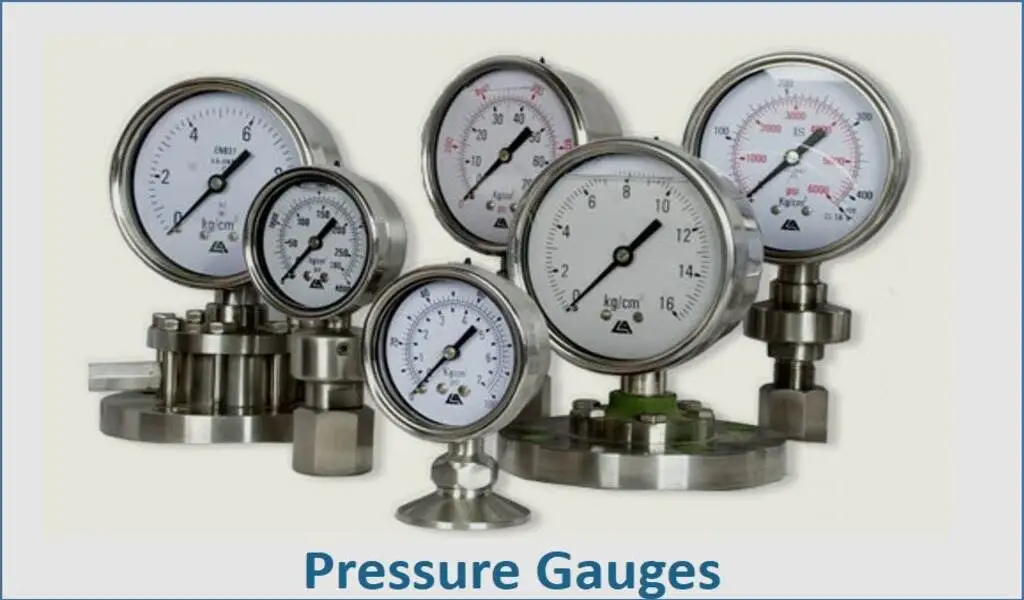What is pressure gauges?
The gauges that are used for calculating pressure are called pressure gauges. Simply put, pressure is the quantity of vertical force involved per squad area of consistency. Experimenters have designed many strategies for calculating pressure. To measure pressure accurately, there are low pressure measurement gauges it is essential to suppose what reference point is being used to calculate it. Therefore, it is organized into ‘complete’, ‘meter’ or ‘differential’ intimidation. A force gauge may be a hydrostatic one or a motorized one.
Low-pressure measurement gauges
It is impossible to estimate external pressure under atmospheric pressure with an average pressure measuring process. Therefore, special devices have been designed to measure pressure levels below atmospheric force in the void range.
Thermocouple gauge:
A thermocouple gauge is many meters functioning on the thermal conductivity direction. The kinematic theory of gases indicates an unbent relationship between pressure and thermal conductivity at low pressure.
The gauge function counts on the thermal conduction of heat between a thin hot metal stripe in the middle and the cold outer shell of a glass tube. The metal strip is warmed by giving a breeze via it, and a thermocouple measures its temperature. The temperature gauged depends on the thermal conductivity of the gas in the tube and, therefore, on its coercion.
Pirani gauge:
Pirani gauge is equivalent to a thermocouple gauge but has a restless element that consists of four spiral tungsten wires attached in parallel.
Two identical tubes are customarily used, connected in a bridge course, with one holding the gas at an unfamiliar pressure and the other vacated to external pressure. The wind is handed via the tungsten element, which reaches a specific temperature according to the thermal conductivity of the gas. The element’s resistance varies with temperature and causes inequality of the stature bridge. The disparity is proportionate to the pressure change. Such gauges cover the force range 10^-5 bar to 1bar.
McLeod gauge:
The gauge can be imagined as a U-tube manometer. To work the needle,
The equation for applied force using McLeod gauge:
Pu = ah^2/Vu
The minimum pressure generally measurable is 10^-4 bar.
Thermistor gauge:
The thermistor gauge works on similar principles to the Pirani gauge but uses semiconductor fabrics for the restless elements instead of metals. The average pressure range covered is 104 bar to 1bar.
Ionization gauge:
The ionization gauge estimates exterior pressures in the range 10^-13 to 10^-3 bar. Gas of unknown pressure is presented into a glass vessel, including free electrons removed from a heated filament, as shown in. Gas pressure is specified.
When to Use
Bourdon tube force gauges have range restrictions, with the most inferior range being ten psi. Thus, any time you need to calculate below that range, you will need a separate sensing feature.
When you need to calculate external pressure or vacuum, low-pressure gauges with a lozenge design can measure as low as 1″ H2O.
A capsule sensing element consists of two grooved metal discs of nerve or stainless steel welded.
A change in coercion will cause the discs to develop or contract, and this motion is transmitted to the arrow through a pinion movement mechanism.
You can use this cost-effective gauge to gauge low pressure accurately up to ±1.0%. The case size has a direct impact on accuracy.
The capsule segment is placed vertically inside the case of a low-pressure gauge.
The lower the metric pressure is, the more extensive the diaphragm area and the more extensive the case diameter.
Types of Force Gauges According to Use
1. Retail and Industrial Pressure Gauges – Commercial gauges are general-purpose pressure calculating instruments generally used in Heating, Ventilation, Air Conditioning (HVAC) and Refrigeration. The industrial pressure gauge is appropriate for not blocking the pressure system’s exhibition operations. Industrial meters are used in manufacturing, OEM applications, hydraulic, water treatment and RO industries.
2. Process Pressure Gauges – A process pressure gauge can be used in industries where the production method operations under extreme conditions, subjected to beatings, pressure points and an acidic environment (like in some regions of petrochemical and other chemical industries) safely operated.
3. Low-Pressure Gauges are appropriate for measuring liquid and gaseous force, provided they don’t impede its functioning. For example, plants building processes, pneumatic systems and cleanrooms often need low-pressure gauges.
4. Seal Gauges are developed to seal potential leak paths. They are utilized in various industrial applications to fulfil textile compatibility requirements, dense applications, corrosive chemicals, pulses, and hygienic and pharmaceutical needs.
5. High Precision Test Gauges – These are well-suited for processes needing accurate calibration as in testing laboratories.
6. Duplex Pressure Gauges are differential pressure gauges that can perform in intense environments and distinguish between two used pressures. This is occasionally needed in refrigeration, fuel, chemical and air-handling Enterprises.
Selecting the Right Pressure Gauge
Elements like the level of precision required, suitable dial size for readability, the durability of the fabric to suit conditions and process requirements, mounting choices unrestricted and the range of stress that it can calculate and tension-type to be calculated decide what kind of gauge may be respectable for you to use.
If you choose a manufacturer that gives you a wide variety of gauges to select from, picking the correct one will be an uncomplicated process.
Conclusion :
We expect you find your list of pressure dimensions devices. Here we show which transducers are used for pressure stature. Here we saw a separate pressure gauge for calculating mechanical pressure. Bourdon tube pressure gauge, Bellows strain gauge, Diaphragm coercion gauge are used for estimating mechanical stress.
We saw in particular about bourdon tube tension gauge working principles, working, types of working pressure etc. Bourdon pipes are easy to use and direct pressure stature devices.
Also Check:
The Relation Between Boiler Steam Pressure And Temperature
⚠ Article Disclaimer
The above article is sponsored content any opinions expressed in this article are those of the author and not necessarily reflect the views of CTN News







